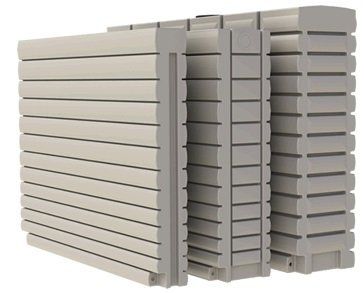Slimline Water Tanks: Space-Saving Solutions for Tiny Qualities
Slimline Water Tanks: Space-Saving Solutions for Tiny Qualities
Blog Article
Recognizing the Value of Rain Tanks in Drought-Prone Regions for Water Protection
In regions susceptible to prolonged dry spells, the function of rainwater tanks in strengthening water protection is a subject of growing value. As neighborhoods grapple with the challenges of water deficiency, recognizing the value of these storage tanks surpasses simple collection of rain. Rain tanks function as a vital tool in reducing the effect of water lacks by supplying a sustainable source of water for various demands. The real value of rain storage tanks extends far past plain storage; it includes resilience-building measures and the promotion of long-lasting water preservation strategies. This diverse strategy to water safety and security warrants a better exam of the role rainwater storage tanks play in ensuring a trustworthy water supply during times of drought.
Advantages of Rain Containers
Utilizing rain containers supplies a lasting remedy for augmenting water supply and enhancing water security in residential and commercial setups. Among the key advantages of rainwater storage tanks is their ability to reduce dependency on keys water. By catching and keeping rainwater that falls on roofs, this different source can be utilized for various non-potable purposes such as irrigation, purging commodes, and cleaning clothing. This not just preserves treated drinking water but likewise reduces water bills for customers.

Rainwater Harvesting Techniques
Rainwater harvesting methods encompass a variety of approaches designed to successfully gather and store rain for various purposes, contributing to water conservation and sustainability. An additional preferred strategy is the usage of above-ground or below ground storage space containers to store rainwater for later usage.

Furthermore, rainfall gardens and absorptive sidewalks are cutting-edge strategies that entail landscaping or paving surface areas in a manner that enables rain to percolate right into the ground, renewing groundwater gets. Furthermore, shape farming and terracing are agricultural practices that help record rain and protect against dirt disintegration in hilly terrain. By carrying out these varied rain harvesting strategies, communities can enhance water safety and resilience in drought-prone regions while promoting sustainable water management methods.
Value of Water Security
Guaranteeing trusted access to clean and enough water sources is vital for sustaining human health and wellness, financial growth, and environmental well-being. Water safety is an essential aspect of social durability, particularly in find out here now areas susceptible to droughts and water scarcity. Adequate water security encompasses various dimensions, consisting of availability, top quality, and ease of access of water for residential, agricultural, commercial, and ecological requirements.
Water safety and security plays a crucial duty in promoting public health and wellness by reducing the prevalence of waterborne conditions and guaranteeing sanitation facilities. Financially, water safety get redirected here and security is necessary for agricultural performance, commercial operations, and total financial growth. Slimline water tanks. Additionally, water safety and security is very closely linked to ecological sustainability, as it supports communities, biodiversity, and overall ecological balance.
In drought-prone regions, water protection comes to be also a lot more essential as a result of the enhanced threat of water shortages. Implementing techniques like rainwater harvesting, water recycling, and efficient water administration practices can substantially improve water security in these locations. By prioritizing water security, areas can better withstand the influences of environment adjustment, populace development, and various other obstacles that intimidate water schedule.
Enhancing Water Durability
With raising international water obstacles, constructing durability in water systems has become an important focus for lasting growth efforts. Enhancing water resilience involves implementing strategies to ensure water availability and high quality in the face of transforming environmental conditions, such as droughts, floodings, and contamination.
One trick facet of boosting water resilience is promoting making use of rainwater containers in drought-prone areas - Slimline water tanks. Rain storage tanks function as a reliable methods of catching and keeping rainwater for later use, reducing reliance on scarce freshwater sources during completely dry periods. By integrating rainwater harvesting systems right into water management plans, neighborhoods published here can improve their capability to hold up against water scarcity and maintain water safety

Lasting Water Preservation
In the middle of escalating water challenges, the prudent monitoring of water resources through lasting preservation methods is essential for ensuring lasting environmental security and societal health. Sustainable water conservation entails the reliable usage of water sources to fulfill existing needs without endangering the capability of future generations to meet their own needs. By carrying out methods such as rainwater harvesting, greywater recycling, and water-efficient modern technologies, communities can reduce water wastefulness and minimize stress on freshwater sources.
In addition, lasting water conservation practices contribute to ecosystem wellness by maintaining appropriate water degrees in rivers, lakes, and marshes, sustaining biodiversity, and maintaining all-natural habitats. These methods likewise play a vital function in alleviating the effects of climate change by helping to adjust to transforming rainfall patterns and water accessibility.

Verdict
To conclude, rain containers play an essential duty in boosting water safety and security and durability in drought-prone areas. By utilizing rainwater harvesting methods, areas can lower their reliance on standard water resources and advertise lasting water preservation techniques. This not only helps mitigate the impacts of water scarcity during dry spells but also contributes to long-term water protection and resilience in the face of climate modification difficulties.
Report this page